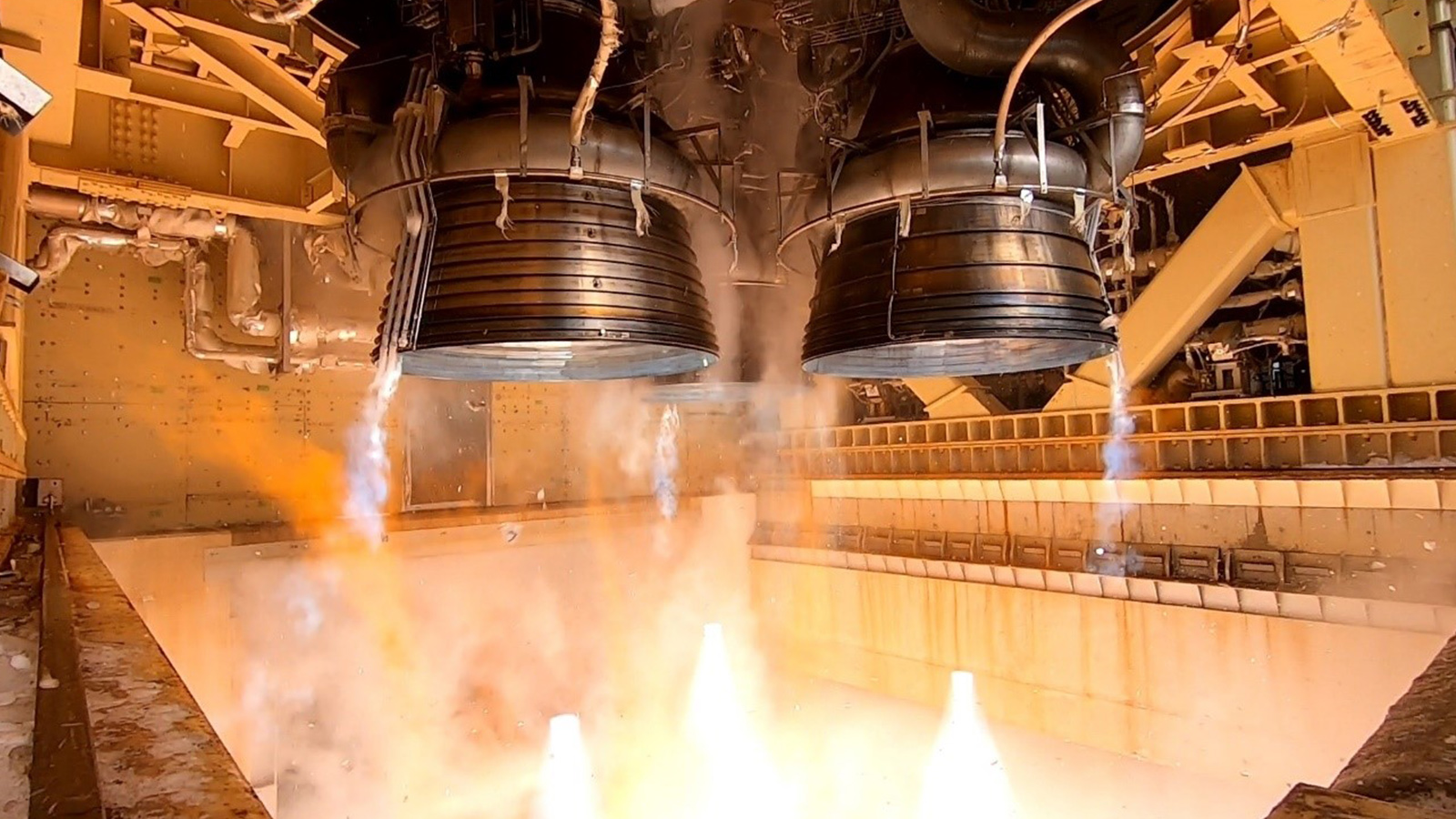Stay Up to Date
Submit your email address to receive the latest industry and Aerospace America news.
The Liquid Propulsion Technical Committee works to advance reaction propulsion engines employing liquid or gaseous propellants.
History was made in May when SpaceX launched NASA astronauts Bob Behnken and Doug Hurley to the International Space Station in a Crew Dragon capsule on a Falcon 9 rocket and safely returned them to Earth. It marked the first crewed mission from U.S. soil since space shuttle Atlantis in 2011, and data from the flight cleared the way for the November launch of the Crew-1 mission. This year, SpaceX also flew one of its Falcon 9 first-stage rocket boosters for the sixth time — a milestone in rocket reusability. Falcon 9’s first stage uses nine liquid oxygen-RP-1 Merlin engines with its second stage powered by one Merlin Vacuum engine.
In August, Starship, SpaceX’s reusable transportation spacecraft designed to eventually carry crew and cargo to Earth orbit, the moon, Mars and beyond, demonstrated a test hop to a height of 150 meters. On this flight test, Starship was powered by a single Raptor engine — a reusable liquid oxygen-methane full-flow staged-combustion rocket engine.
NASA also made progress with its Artemis program to put humans back on the moon. The Space Launch System deep-space rocket began a series of tests in January at NASA’s John C. Stennis Space Center in Mississippi. The tests are scheduled to culminate in an eight-minute hot-fire test of the core stage’s four Aerojet Rocketdyne RS-25 engines generating a combined 1.6 million pounds of thrust. Also this year, NASA awarded commercial contracts for the development of three lunar lander designs and two elements of the lunar Gateway. The Power and Propulsion Element for Gateway will incorporate a refuellable bipropellant reaction control system.
The new U.S. Space Force awarded the National Security Space Launch Phase 2 contracts to United Launch Alliance and SpaceX in August. ULA’s Vulcan Centaur rocket evolved from the Atlas V and Delta IV vehicles. Its first stage has two natural gas-fueled Blue Origin BE-4 engines, while two Aerojet Rocketdyne RL-10 engines power the second stage. The RL-10 has considerable heritage, with the 500th flight of the engine occurring in March with the launch of the Advanced Extremely High Frequency-6 satellite on an Atlas V rocket.
In August, NASA’s Green Propellant Infusion Mission demonstrated a new green propulsion system developed by Aerojet Rocketdyne. The system operates on a low-toxicity, high-performance propellant developed by the U.S. Air Force Research Laboratory.
In Europe, ArianeGroup hot-fire tested an additively manufactured combustion chamber at the German Aerospace Center, DLR’s facility in Lampoldshausen in May. The 130-kilonewton- class hardware features a low-cost copper alloy, a cold-gas sprayed jacket and a 3D-printed, single piece injector head. The expander cycle integrated technology demonstrator was developed as part of the European Space Agency’s Future Launchers Preparatory Program and is designed to power next-generation upper stage engines. In support of Prometheus, the European liquid oxygen-methane precursor engine program, subsystem components were tested and delivered for engine integration this year.
In March, JAXA, the Japan Aerospace Exploration Agency, conducted hot-fire testing of the liquid oxygen-liquid hydrogen experimental reusable vehicle RV-X at the Noshiro test complex. Japan’s new H3 launch system underwent a first-stage development firing test, referred to as a battleship firing test. The H3 first stage will have two or three liquid oxygen-liquid hydrogen LE-9 engines. Captive fire tests of the H3 second stage, powered by an LE-5B-3 engine, were conducted from July to September at the Mitsubishi Heavy Industries Tashiro test complex in preparation for the first H3 launch.
Contributors: Kevin Lohner, Scott Miller, Koichi Okita, Dieter Preclik and Chris Radke
Related Posts
Stay Up to Date
Submit your email address to receive the latest industry and Aerospace America news.




